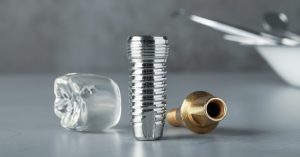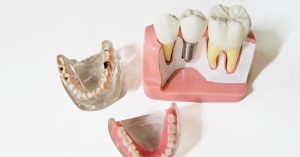In the evolving field of dental implantology, selecting the ideal implant system is crucial to achieving stable, long-lasting outcomes for patients. Among the numerous implant options, internal hex implants have gained recognition as the gold standard. Their unique design provides excellent stability and compatibility with various prosthetic solutions, making them the most reliable choice for a wide array of dental treatments. This article will delve into the reasons internal hex implants lead modern dental practice, emphasizing their structural advantages, clinical success, and long-term benefits for both dentists and patients.

Understanding Internal Hex Implants
Internal hex implants feature a hexagonal configuration within the implant fixture, connecting it to the abutment. This hexagonal connection allows for a secure and precise interface between the implant and the abutment, enhancing stability and minimizing micromovement. This design plays a crucial role in osseointegration—the process where the implant biologically bonds with the bone—ensuring the implant’s longevity.
How the Internal Hex Design Enhances Stability
The internal hex configuration provides several key advantages:
- Improved Mechanical Stability: The internal hex design distributes occlusal forces more evenly across the implant and surrounding bone, reducing stress and decreasing the likelihood of implant failure.
- Accurate Prosthetic Fit: The precise connection between the implant and abutment ensures that attached prosthetics, such as crowns or bridges, remain securely positioned.
- Minimized Micromovement: Micromovement between the implant and prosthetic is a common cause of implant failure. The tight fit of internal hex implants reduces this risk, significantly improving long-term outcomes.
For those seeking the Best Internal Hex for Implantology, the internal hex system stands out due to its balance of stability, accuracy, and adaptability.
Clinical Success of Internal Hex Implants
Research consistently highlights that internal hex implants achieve superior success rates, particularly in more challenging dental scenarios. Studies demonstrate that internal hex systems outperform other types of implant connections under the following conditions:
- Low Bone Density: The stability of the internal hex design is especially beneficial when bone density is low, or in cases requiring bone grafts.
- Single Tooth Restorations: Internal hex implants are ideal for single-tooth replacements, providing both aesthetic and functional excellence due to their precise alignment.
- Full Arch Reconstructions: In full arch cases, internal hex implants offer the stability required to support extensive prosthetics like bridges or dentures, ensuring they remain secure under heavy biting forces.
With clinical success rates often exceeding 95%, internal hex implants have become a trusted option for dental professionals globally.
Long-Term Advantages for Dentists and Patients
The benefits of internal hex implants extend well beyond initial treatment, offering significant long-term advantages:

- Versatile Application Across Treatments
Internal hex implants are suitable for a wide variety of procedures, from straightforward single-tooth restorations to complex full-arch reconstructions. This versatility allows dental practices to standardize their implant systems, simplifying inventory and training. - Enhanced Patient Comfort
The stable foundation provided by internal hex implants minimizes discomfort during the healing phase and enables a quicker return to normal oral function. Patients report higher satisfaction and require fewer follow-up visits for adjustments. - Lower Complication Rates
Complications, such as abutment loosening or implant failure, are significantly reduced with internal hex implants. Their precise connection minimizes micromovement and helps prevent bone loss, maintaining implant integrity over time. - Cost Efficiency for Clinics
High success rates and low complication incidences make internal hex implants a cost-effective choice for clinics. This translates to fewer re-treatments, shorter chair time, and improved practice profitability. - Compatibility with Modern CAD/CAM Systems
Internal hex implants are highly compatible with CAD/CAM (computer-aided design and manufacturing) technology. This allows for the accurate creation of custom abutments and crowns, streamlining the workflow and enhancing the precision of prosthetic designs.
Selecting the Best Internal Hex Implant System
Choosing the ideal internal hex implant involves assessing both the implant’s quality and the credibility of its manufacturer and supplier. WholeDent offers a wide selection of internal hex implants that meet stringent industry standards. Their range includes top-quality implants designed to ensure compatibility, ease of use, and lasting reliability. WholeDent’s internal hex implants are crafted from premium materials, surpassing clinical expectations. From internal hex healing caps to angulated abutments and impression copings, their comprehensive options support successful outcomes in various implant cases.
Conclusion
Internal hex implants have solidified their position as the preferred choice in dental implantology due to their stability, precision, and consistent long-term success. Their adaptability across numerous dental procedures, combined with their ability to enhance clinical and patient outcomes, make them a favored selection for professionals worldwide. For those searching for reliable and effective solutions, WholeDent’s internal hex implants offer a dependable choice that helps elevate the standard of dental care.
By selecting WholeDent’s internal hex implants, dental practitioners can trust they are investing in products that support excellent clinical results and patient satisfaction.
